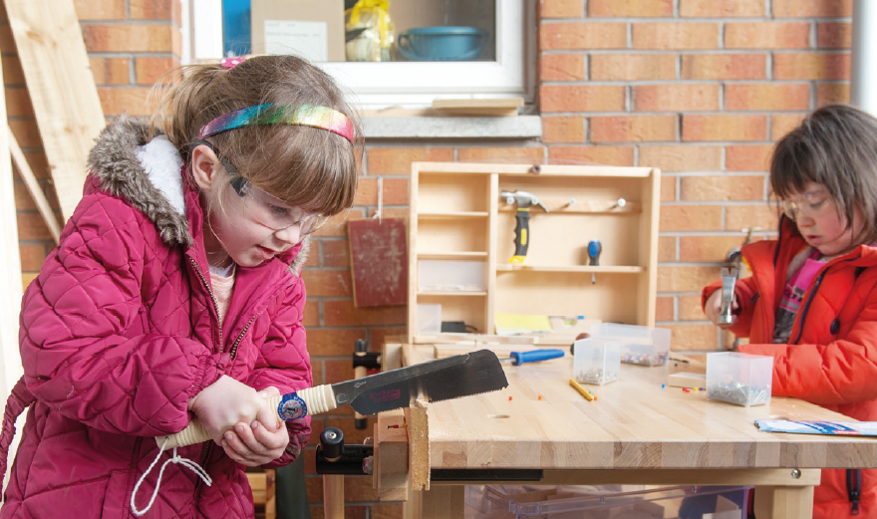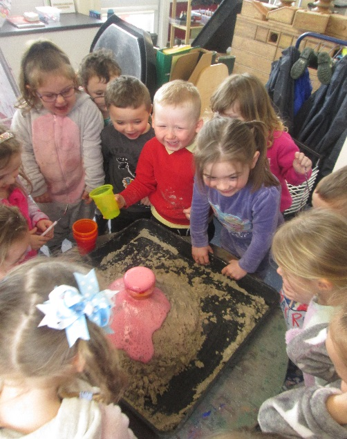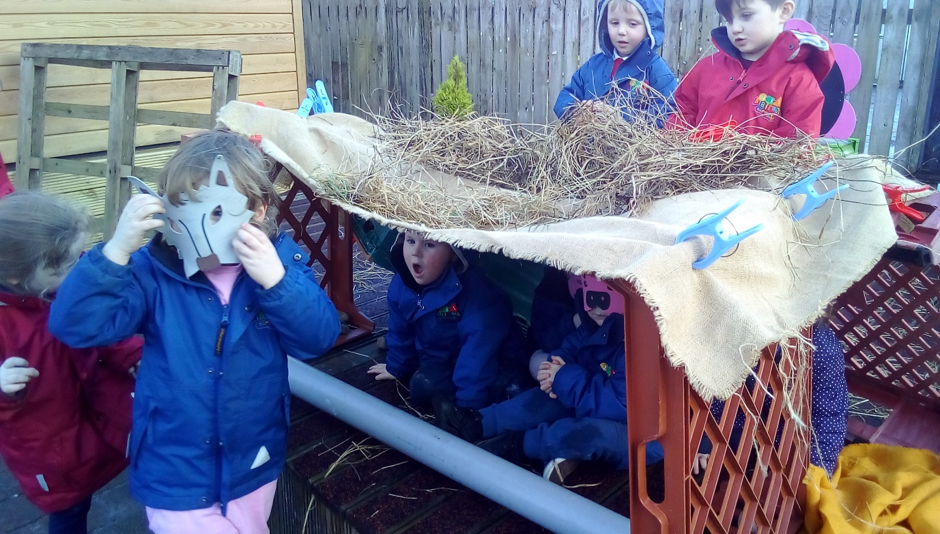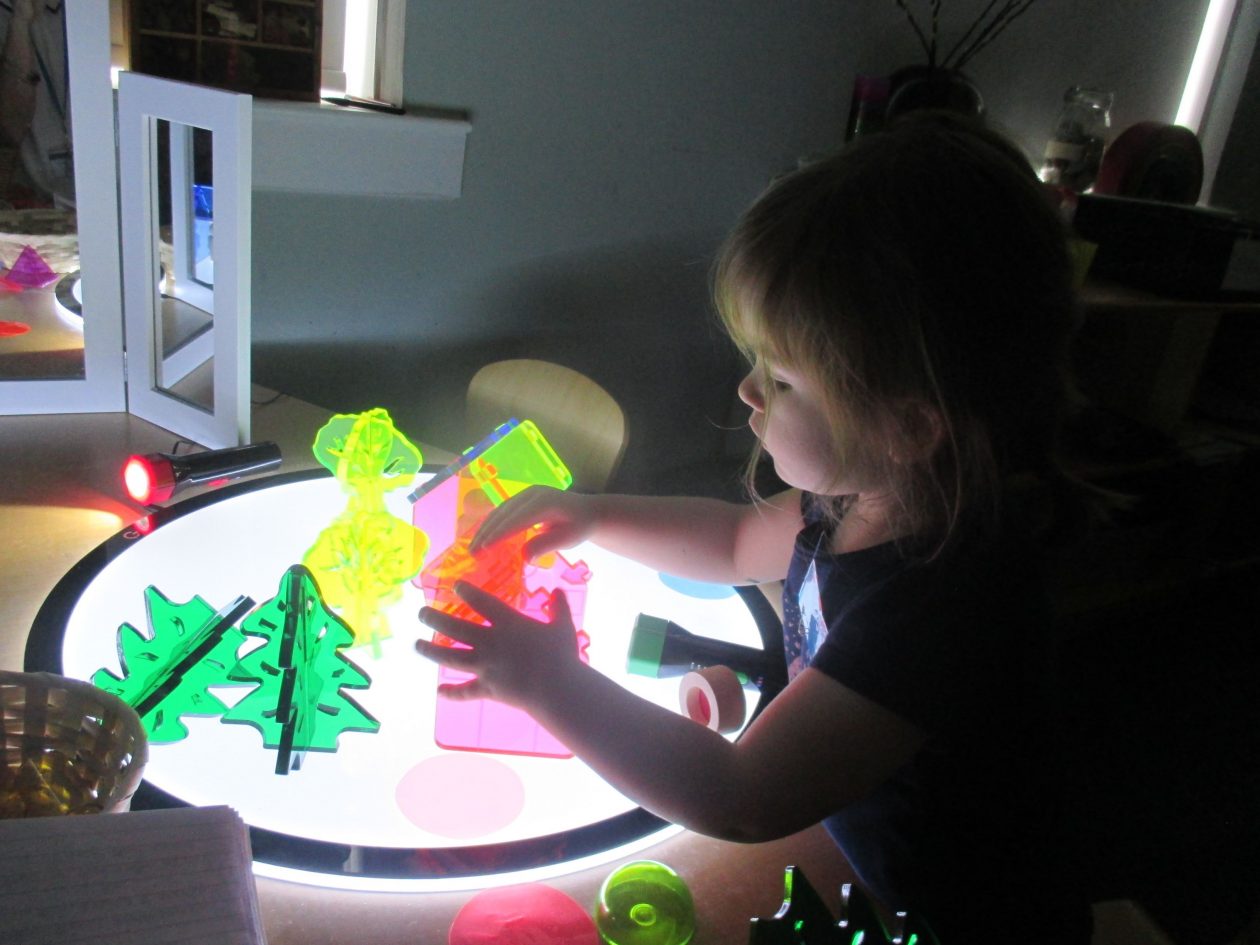We would love to showcase your practice showing STEM education in an ELC context. If you have something to share then please email the STEM team at STEM@educationscotland.gov.scot
Sunflower Family Nurture Centre
This example of practice from the National Improvement Hub demonstrates the rich STEM learning opportunities on offer at Sunflower Family Nurture Centre for children, families and the wider community. It shows how children experience STEM and how it is woven through the environment for learning, planned experiences, family learning and parenting programmes. Please click on the image, heading or here to be directed to the exemplar.
Torridon Education Group
Children returned from their summer holidays in August to the very sad news that East Beach Bridge was broken and had been closed! East Beach Bridge is the main access point for outdoor learning and beach school at Lossiemouth Nursery. The closure of the bridge has had a massive impact on the lives of the community, not only for beach school at nursery, but also for family time and dog walks outside of nursery.
The children talked about the bridge and it being broken so much that naturally, following their interests, this is where the learning went. The nursery was able to cover all aspects of the curriculum including outdoor learning, STEM, health and wellbeing, problem solving, creativity and literacy. The children worked together to come up with plans of how they would fix the bridge. They firstly worked together inside with small loose parts and then put their plans into action in the garden on a much bigger scale using large loose parts and their builders’ yard equipment – some budding engineers and builders were created.
They visited the bridge on their way to the woods and learners warned passers-by of the dangers ⚠️ ⚠️. This led them to look at how we stay safe. They thought about ‘Safe Simon’ a lot which led to a full exploration of all the SHANARRI/wellbeing people and has really helped to embed the Getting it Right for Every Child (GIRFEC) principles in everyday life for the children.
The children love literacy and story telling and so also created their very own story about the bridge and who they thought could fix it! 🔨 🧱 🔧
The bridge project and everything that stemmed from it was a child-led learning project and practitioners were thrilled they were so engaged in planning their own learning so early on.


STEM in Bowhouse ELC
Bowhouse ELC strive to offer STEM experiences to their children in a variety of contexts. Their ‘Marvellous Mealtimes’ holistic approach to lunches was developed to ensure children experience a relaxed and unhurried mealtime experience. Through this approach, the children are cooking/baking, measuring, weighing, using real tools, etc.
An identified block play area is part of their continuous provision, ensuring children have a consistent, reliable resource they can use on a dialy basis to support their creativity. Block play promotes creativity, co-operation, problem-solving, and understanding of mathematical concepts, amongst many more.
The outdoor area is rich with opportunity for children to design, build and engineer creations of their choosing using pipes and tubes, tyres, wooden pallets, rope, tarpaulin……..the list is endless! This is supported further with the recently established woodwork area, with children again using real tools and resources.
The children regularly become scientists, conducting experiments together and learning through experience.
Bowhouse is always looking at how they can further develop STEM within their setting, and are in the process of creating a STEM shed for the indoor environment as part of a project to increase children’s understanding of pattern through STEM experiences.
Blairmore Nursery School
Blairmore Nursery School is situated in Greenock. The nursery caters for 15 children in the 2-3 room and 72 children in the 3-5 room.
The children have access to a large outdoor learning area and staff resource the area to provide daily opportunities for STEM learning.
Here the children have been reading the story of “The Three Little Pigs” and also had the opportunity to develop their STEM skills by using a variety of materials to build the house of straw.
Lighting up Learning – STEM in Hazeldene Family Centre
The children in Hazeldene Family Centre benefit daily from a wide range of learning experiences in Sciences, Technology, Engineering and Maths. The playrooms and outdoor spaces are organised to give endless opportunities for them to explore using all of their senses. Children confidently use tools and equipment to prepare their snack or design and make models at the woodwork bench. In the block play area and using loose parts outdoors, children create a variety of complex structures.
Children gain experience in coding as they programme digital toys. They use metal detectors and magnets to test different materials. Digital microscopes help them examine items such as the parts of a flower. Children learn about electricity when they build simple circuits to light a bulb or ring a buzzer. They explore how colours blend and change when they place different translucent and opaque materials on the light boxes.
The children’s interest in light and shadow became the focus for a project which extended over several months. They investigated natural and artificial light using torches, fibre optics, lamps and a variety of loose parts. They played games to guess whose shadow was projected on the screen. They invented their own light boxes and used these with a variety of toys.
In the outdoor areas children investigate forces using the pulley to transport sand; building ramps and varying the angles to observe how toys move. Children have designed their own marble runs to look at simple forces and their effects. They learn about change in materials when mixing potions or adding ingredients in the mud kitchen. They observe the flow of water as they pour it through various funnels and tubes on the water wall.
Children’s interest and curiosity about ice they found in the garden was extended to include freezing toys in small containers and then problem solving to free them from the ice; making ice gardens; investigating different ways to melt ice and making ice cream.
With the support of a STEM grant for Continuous Professional Learning, staff have been able to develop a series of workshops to share the learning with other early learning and childcare and primary colleagues across East Renfrewshire. Parents have also participated in workshops to support their child’s learning in STEM at home. Parents whose work is focused on STEM have talked with the children, helping them to make simple turbines or learning about the human digestive system. All of the workshops have been very well received and evaluated as highly effective.
Menzieshill Nursery, Dundee

A series of five workshops were designed with a selection of basic science experiments to try together at nursery. Parents were provided with information sheets with materials and method including a short explanation of what is happening using scientific language. At the end of each session a small bag was sent home with a few materials and the information sheet. The group had a high attendance across the weeks with families sending in pictures of experiments they tried at home.
In response to a questionnaire given to parents/carers, practitioners created a set of science workshops for children and their family.
Belonging: Countering self-selection in play
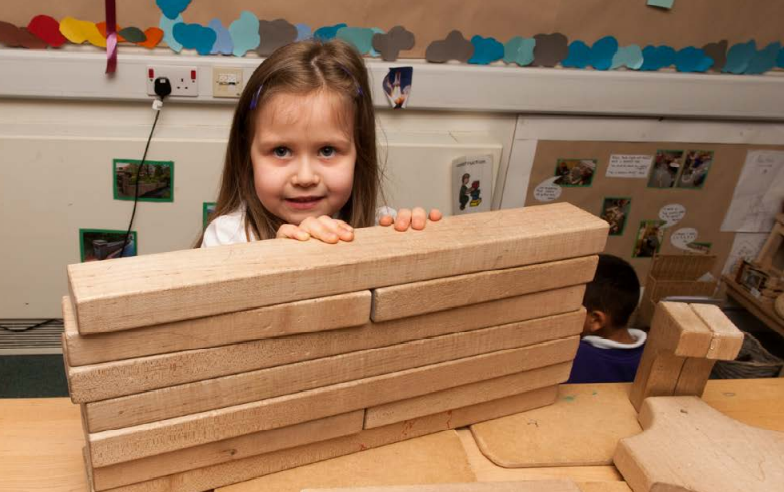
Young people are susceptible to gender stereotypes from a very early age. Many children self-select out of certain activities or spaces based on their observations of what is appropriate.
One early learning and childcare centre (ELC), aware that their block play area tended to be dominated by one group of boys, decided to carry out a short piece of action research. They experimented with putting pink into the area, using anything they had to hand such as feathers, beads, and ribbons. They did not intend this to be a long-term arrangement, but they were interested in the initial impact.
They report that the boys were horrified. It was like a line had been drawn across the entrance to the area that they could not cross. Meanwhile, some girls began to explore the area in ways they previously had not. It was never intended as a long-term solution, but served to highlight to the staff that the way an area is set up can have a significant impact on who interacts with it. It also highlighted the degree to which gender stereotyping and expectations are already embedded in the children’s thinking. It stimulated a lot of discussion.
The nursery staff are now trying less overt ways of changing the dynamic of this and other areas. They are also exploring ways to encourage boys to engage with developing literacy and verbal skills. More broadly, the staff report being much more aware of their own and the children’s unconscious gender biases. They are proactively challenging, for example, some boys’ aversion to pink.


